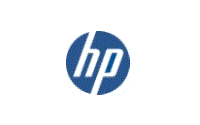 Ciena introduced its programmable, 8700 Packetwave Platform, a multi-terabit Ethernet/DWDM switch designed to transform metro and inter-data center networks.
Ciena introduced its programmable, 8700 Packetwave Platform, a multi-terabit Ethernet/DWDM switch designed to transform metro and inter-data center networks.The new 8700 Packetwave integrates Ethernet and MPLS-TP switching with Ciena’s WaveLogic Photonics into a single, scalable platform. It leverages Ciena’s Service-Aware Operating System, OneControl Unified Management System, and SLA portal. It can also be deployed in conjunction with Ciena’s V-WAN software to give customers performance-on-demand cloud service connectivity.
The 8700 supports the following applications:
- High-capacity 10GbE to 100GbE Ethernet aggregation and switching over DWDM applications to support reliable and secure high-bandwidth services.
- Packet applications including MPLS-TP, G.8032 Ethernet rings, and IEEE 802.1ad (QinQ) for more resilient and scalable architectures.
- 40GbE/100GbE service demarcation support for differentiated MEF 2.0 compliant services.
- Automated virtual cross-connect, enabling exchange operators to offer enterprise customers on-demand direct connectivity to cloud providers and network operators with collocated PoPs to greatly reducing cross-connect provisioning time to just minutes.
The 8700 represents the first in what Ciena believes will be a new class of networking product to help network operators rapidly deliver high-capacity services, efficiently aggregate users, and provide express connections to data centers. The platform seamlessly integrates 100GbE and 10GbE packet aggregation and switching, taking advantage of the performance and efficiency of modern merchant silicon, with Ciena’s 100G WaveLogic coherent optics and photonic technologies.
“The metro network is the new battleground and we are taking the best of the data center with the best of the metro to create a new, disruptive market opportunity and set the benchmark for metro core network builds. Our 8700 Packetwave Platform builds on our established leadership in packet networking, leveraging the convergence of carrier-grade packet switching and aggregation along with coherent optical networking and programmability to help transform metro networks into ‘on-demand’ platforms that can provide greater customization of communication services and applications," stated Francois Locoh-Donou, Senior Vice President, Global Products Group, Ciena.
Ciena’s 8700 Packetwave Platform will be generally available in the summer of 2014.
http://www.ciena.com/products/8700/

















